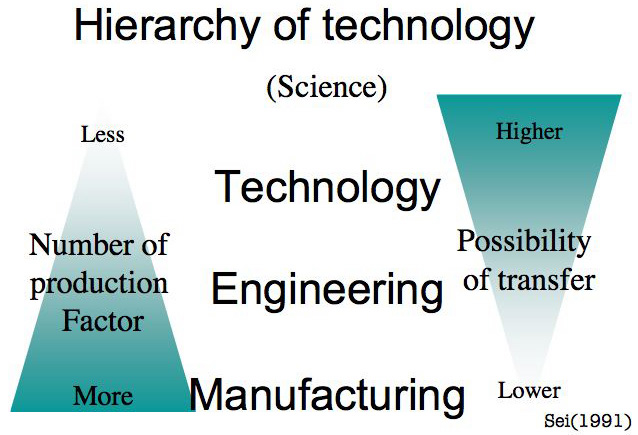OBJECTIVE
(1) Collecting materials/data on technology transfer by Japanese steel Industry to Usiminas and Brazilian steel companies by interview.
(2) Discussion with researchers and students who are interested in steel industry and technology transfer/development.
ACTIVITY
(1) Interview with ex-employees of Usiminas who speak Japanese for know their experiences in the beginning of Usiminas. Making report all about that they talked. The report must be checked by the interviewee. Volume of interview is situational, but approximately 60-120min x 4-5 times per person.
(2) Interview with ex-employees of Usiminas who speak Portuguese for know their experiences in the beginning of Usiminas. Making report all about that they talked. The report must be checked by the interviewee. Volume of interview is situational, but approximately 60-120min x 4-5 times per person.
(3) Collecting and read related articles in Portuguese and English.
(4) Plant Visit. Visiting steelworks, etc.
(5) Preparation for seminar. Including translating from Japanese and English to Portuguese.
*I need student who can take charge of (2) and can participate to (3) and (5).
RESEARCH INTERESTS
Iron and steel industry in developing countries (technology transfer, industrial policy, industrialization). Until now, I have researched on Japanese technology transfer system in steel industry and wrote 2 articles about case of Usiminas:
"Technology Transfer by Japanese Steel Industry to Usiminas, Brazil." The Shogaku ronshu : the Business Review of Kansai University, Vol.47, No.1, pp.85-118, 2002 (in Japanese).
"Technical Study in Japan and Technical Assistance by Japanese Steel Industry for Start-up Operation of Usiminas, Brazil" The Shogaku ronshu : the Business Review of Kansai University, Vol.47, No.2/3, pp.271-294, 2002 (in Japanese, but this conclusion is available in English on http://www2.ipcku.kansai-u.ac.jp /~shin/hasegawa2002br2concl.html).
Now, I am interested in process of transfer technology and improve technical skill/knowledge ranged from engineer to operator by technical study and technical assistance. I will collect materials on some cases.
(1) Why Usiminas?
The integrated iron- and steelmaking works of Usiminas which was built over the period of the latter half of the 1950s through the first half of the 1960s, was the first instance of technology transfer in the steel industry to Brazil from Japan, and an example of a typical successful endeavor. It is also considered a prototype of postwar Japanese technology transfer and technical cooperation.
"Even before Japan's international competitiveness in the most advanced technologies had become globally recognized, its steel-manufacturing technology was drawing foreign attention. In 1964, one of the biggest new steel mills in Europe, an Italian steel maker in Toronto, had newly completed construction of two blast-furnaces with a capacity of 2,000 tons each and a converter with a capacity of 3,000 tons. When it encountered problems in its blast-furnace operations, it turned to Yawata Steel for technological advice. Within six months, Toronto had been able to increase its output 15 per cent. Later, Yawata exported converter technology to British Steel Co., in Wales, the birthplace of modern iron-manufacturing technology. Japan's export of such technology culminated in a series of plant exports to developing countries, including Brazil (Usinas Siderúrgicas de Minas Gerais, or Usiminas), Malaysia (Malayawata Steel Co., Ltd.), and the Middle East (Qater Steel Co.)." (Hayashi, 1994)
(2) Japanese-Style Technology Transfer Systems
Hayashi(1995) classified technology transfer into the following three categories:
1) transfer in the form of documents (patents, blueprints, process drawings, manuals, etc.),
2) transfer in the form of facilities such as machinery and industrial tools,
3) transfer via people and organizations (dispatch of Japanese technical experts to local areas and of local employees to Japan for technical training).
Technology transfer by people (face-to-face), within the context of the entire technology transfer process, is a defining characteristic of Japanese technology transfer systems.
(3) Hierarchy of technology (Sei, 1991)

1) Technology layer:
Development production facilities and machines.
2) Engineering layer:
Production line design (How to design and make production line by arrangement of machines and facilities).
3) Manufacturing layer:
Production line operation and maintenance (How to operate and maintain production line using ingenuity).
The possibility of transfer becomes lower as number of production factor increase. i.e.:
Number of production factor: Technology < Engineering < Manufacturing
Possibility of transfer: Technology > Engineering > Manufacturing
In general, manufacturing layer is most difficult to transfer. Nevertheless, Japanese manufacturers are good at technology transfer at manufacturing layer. Above all, Japanese manufacturers put emphasis on manufacturing layer and being "on site" and "on the job" ("Genba-shugi"). It characterizes the technology transfer by Japanese, too.
Reference
Hayashi, Takabumi (1995). "Technology Accumulation and Japanese-Style Technology Transfer Systems," in Technological Development in Asia and Technology Transfer, edited by Takabumi Hayashi and Chen Bingfu, Bunshindo (in Japanese).
Hayashi, Takeshi (1990). The Japanese experience in technology: from transfer to self-reliance. United Nations University Press (United Nations Sales No. E.90.III.A.4 HSDB-36/UNUP-566, Available: http://www.unu.edu/unupress/unupbooks/uu36je/uu36je00.htm).
Sei, Shoichiro (1991). "The Japanese character of pricing mechanism and development of suppliers." The annual report of the Economic Research Institute, Kanto Gakuin University, No.13 (in Japanese).
